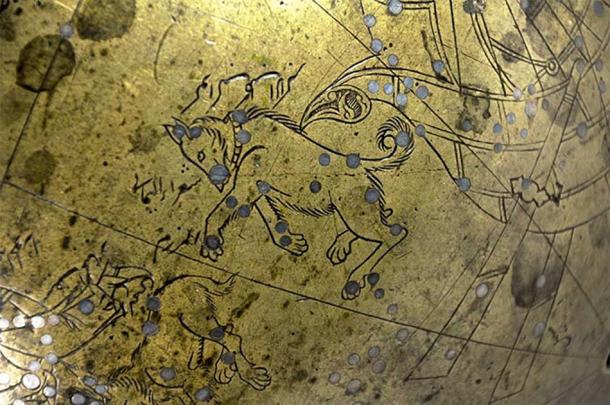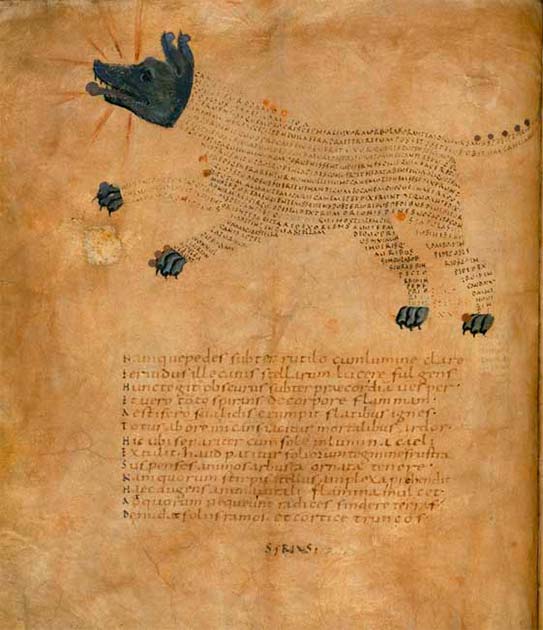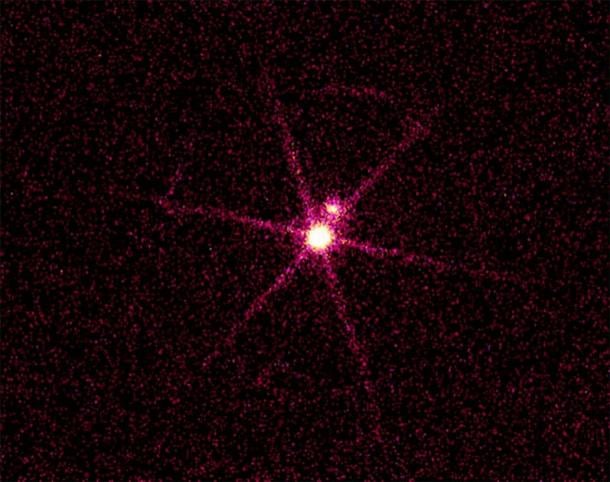What Makes Sirius, the Dog Star, So Special?
The accolade of “brightest star in the sky as viewed from Earth” goes to the well-known star Sirius, popularly called the Dog Star due to its role as the dominant star in the Canis Major, meaning the “greater dog” constellation. Being such a visible heavenly body, it has been the object of wonder and veneration to ancient peoples throughout human history.

Canis Major as depicted on the Manuchihr Globe made in Mashhad 1632-33 AD. Adilnor Collection, Sweden. (CC BY-SA 4.0)
Sirius: The Dog Star of Ancient Cultures Around the World
Interestingly, totally separate ancient cultures with no apparent communication have related the brilliant Sirius with either a wolf or a dog. In ancient Chaldea (present day Iraq) the star was called the “Dog Star that Leads,” while in ancient China the star was identified as a heavenly wolf. The Dog Star Sirius was known as “the Dog of the Sun” in Assyria and Akkadia.
- Changing Colors and Scampering Across the Night Sky: What Did the Ancients Say about Sirius?
- Dog Days of Summer: The Rising of the Dog Star, Sirius
Meanwhile, North American indigenous tribes have also referred to the star in canine terms. The Seri and Tohono O’odham tribes of the southwest describe Sirius as a “dog that follows mountain sheep,” while the Cherokee paired Sirius with Antares as a dog-star guardian of the “Path of Souls.” The Skidi tribe of Nebraska named it the “Wolf Star,” and further north the Alaskan Inuit of the Bering Strait called it “Moon Dog.”

Crop of "Canis Major, Lepus, Columba Noachi & Cela Sculptoris", plate 30 in Urania's Mirror. (Public domain)
The Dog Star Sirius in Millennia of Astronomy and Mythology
The Sirius system, located a mere 8.6 light-years away from Earth, stands as the fifth closest known stellar system to humanity. Derived from the ancient Greek Seirios, meaning "glowing" or "scorcher," its name carries a profound significance.
This brilliant star has played a crucial role in astronomy, mythology, and occultism for millennia, as evidenced by its depiction on ancient artifacts. In the ancient Vedas of the Indian subcontinent, this star was known as the Chieftain's star; in other Hindu writings, it is referred to as Sukra, the Rain God or Rain Star.
The celestial movements of the Dog Star Sirius held immense significance in marking and predicting events on Earth. In one example, the heliacal rising of Sirius was intricately linked to the flooding of the Nile in ancient Egypt, signifying the beginning of a new agricultural cycle.
Similarly, for the ancient Greeks, this rising of Sirius coincided with the “dog days” of summer, representing the hottest and most uncomfortable days of the season. The Polynesians, on the other hand, regarded the appearance of Sirius as an indication of winter and relied on it for navigation across the vast Pacific Ocean.
Across various civilizations, including the Sumerians and Babylonians, the trajectory of Sirius was observed and revered. Its celestial journey inspired a sense of reverence and awe, leading to its classification as a sacred entity. The appearance of Sirius in the night sky was often accompanied by grand feasts and joyous celebrations, paying homage to its profound influence and celestial splendor.
The Dog Star Sirius held was unrivalled as the most significant celestial body in the ancient Egyptian sky. Indeed, it served as the cornerstone of their entire religious system, with the majority of their deities intricately linked to this luminous star. The Egyptian calendar system, crucial for agricultural and societal planning, revolved around the heliacal rising of Sirius. This annual event, which took place just before the summer floods of the Nile, marked a pivotal moment in their lives and shaped their understanding of time and the cycles of nature.

A 9th-century astronomical manuscript, including an illustration of the constellation "Sirius". (CC0)
Did the African Dogons Possess Mysterious Stellar Knowledge?
The Sirius Mystery, a thought-provoking book authored by Robert Temple, stirred controversy upon its publication. Temple made a striking claim that the Dogons, an ancient African tribe from Mali, possessed knowledge about Sirius that seemed impossible to obtain without advanced telescopic technology. According to his assertions, the Dogon people had an understanding of the binary nature of Sirius, which consists of two stars known as Sirius A and Sirius B.
- Did Ancient Aliens Impart Advanced Astronomical Knowledge to the Dogon Tribe?
- Looking to the Stars of Australian Aboriginal Astronomy

The Chandra X-ray image of Sirius A & B, a double star system located 8.6 light years from Earth, shows a bright source and a dim source. This is not visible with the naked eye. (Smithsonian Institution)
In his book, Temple proposed that the Dogon's awareness of Sirius B, a white dwarf companion star to Sirius A, indicated a profound ancient connection or even extraterrestrial contact. These claims sparked extensive discussions and debates among scholars and researchers, exploring the origins and extent of the Dogon's astronomical knowledge.
However, it is important to note that these claims have been met with skepticism and criticism by some experts, who suggest alternative explanations such as cultural diffusion or misinterpretation of Dogon traditions. The Sirius Mystery continues to be a subject of interest and controversy, prompting further exploration of the Dogon's fascinating cosmological beliefs and the origins of their alleged knowledge about the Sirius star system.
The Dog Star Sirius as a Source of Knowledge and Power
These days, Sirius continues to hold a significant place in religious beliefs and spiritual practices. In various secret societies that persist today, the Dog Star is considered the core focal point of their teachings and symbolism.
Throughout the course of human civilization, from ancient times to the present day, Sirius has maintained its association with divinity and has been revered as a profound source of great knowledge and power. The star that shines brightest to us here on Earth has undeniably carried special symbolic meaning for humanity throughout history.
Top image: Sirius, the Dog Star, the dominant star within the Canis Major constellation. Source: iryna / Adobe Stock




















Comments
I recommend the Robert Temple book to anyone interested in the subject, as well as "Hamlet's Mill" by Santillana and Von Dechend. Both are benchmarks for what the level scholarship in the field should be.